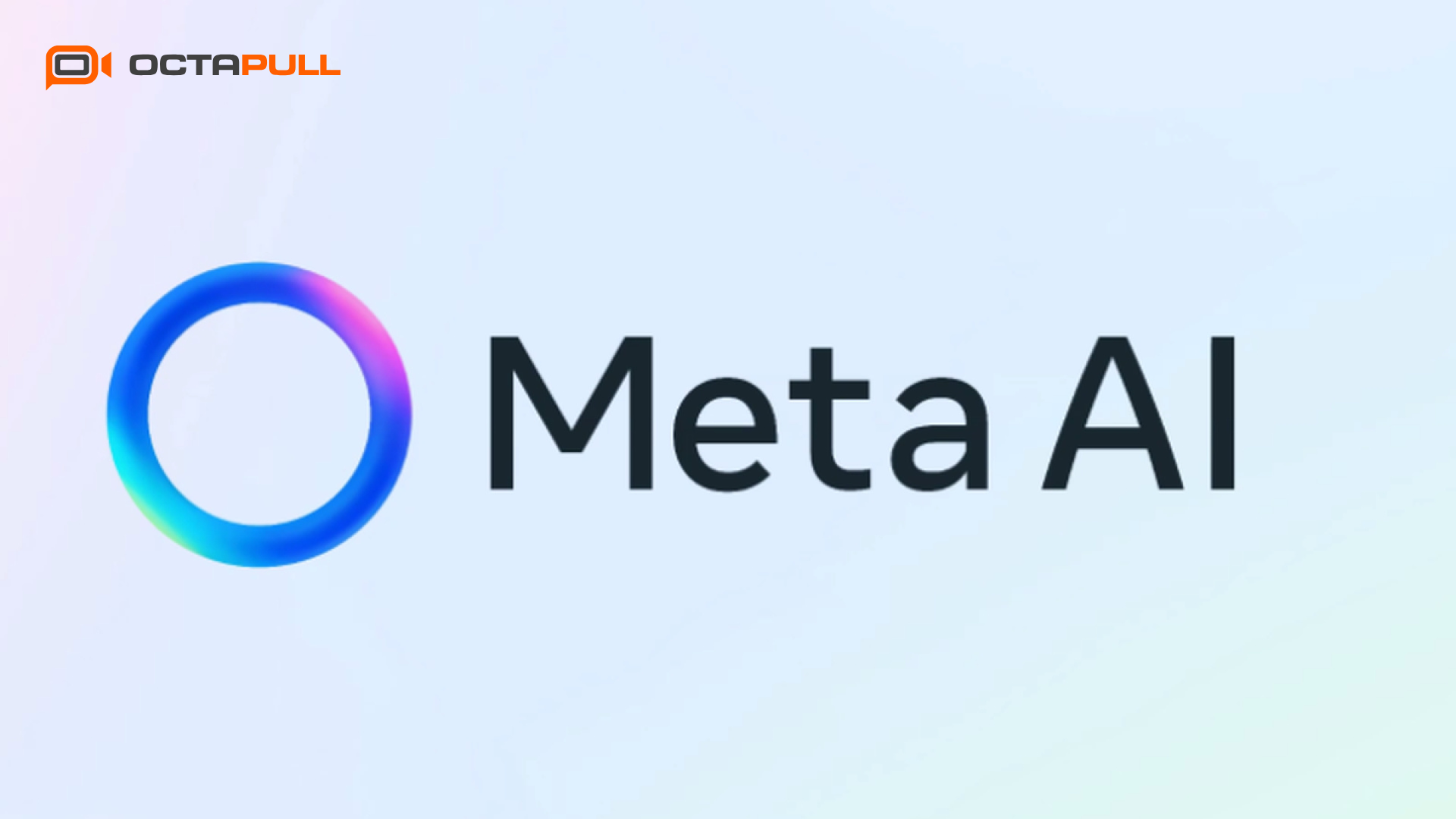Agile Practices in Remote Teams: Most Common Mistakes and Solutions
Effective team management plays a significant role in today's remote work settings and provides many benefits to organizations and businesses. However, there are still prevalent mistakes and challenges that hinder organizational performance.
Agile team strategies, especially for software development processes, offer practical and valuable insights into these difficulties in remote team management. By encouraging an individual, adaptable, and results-oriented environment and regular communication customer satisfaction and loyalty can be increased.
In this sense, the use of task tracking, project management and collaboration platforms such as OctaMeet provides a secure and reliable platform for communication needs, supporting businesses in their digital transformation and enhancing organizational productivity and success.
What is Agile Methodology?
Agile methodology is a set of principles mainly developed for the field of software development. In project management, it encourages team members to adopt an individual, collaborative, adaptive, and result-oriented approach to fulfill customer demands and needs.
Unlike traditional team management, this concept requires members to be self-directed and self-organized to reach a common goal through shared leadership and increases efficiency by creating a supportive working environment.
Agile team leaders are responsible for supporting and guiding their team members by enhancing communication through regular meetings and preparing plans for overcoming potential obstacles in projects.
They motivate individuals, support their development, and provide personal feedback to reinforce self-improvement. Creating cross-functional teams, capable of contributing to multiple areas, is highly beneficial in this framework.
Structuring an agile team involves various methods, such as the Kanban method. It is crucial to use project management tools for task assignment and process tracking, and video conferencing platforms like OctaMeet to facilitate regular and robust team communication.
Common Mistakes and Issues in Remote Team Management
Lack of Open Communication
Remote teams may struggle to keep in touch with other team members, and this can make it difficult to manage teams. As a result, employees may be confused and stressed as they may not clearly understand the responsibilities and expectations of team leaders.
Therefore, remote teams may feel anxious, and their performance can be hindered. Furthermore, a lack of proper team management and agile practices can negatively affect mutual trust between employees and employers.
Issues with Time Management
Time management is an essential aspect of project management. Without effective planning, remote teams may struggle to meet the deadlines they set and finish their tasks and projects on time. This can negatively affect overall organizational performance.
Although remote working offers many advantages in terms of flexibility, not having sufficient and regular communication, lack of collaboration between team members, diverse schedules and personal commitments of teams can deteriorate the progress of projects.
Issues with Software, Tools, and Infrastructure
Remote teams need to be provided with the necessary equipment for their tasks, along with reliable business infrastructure. Otherwise, technical issues can affect the efficiency of remote teams and the workflow of business operations.
Such issues include unreliable internet connection, unstable or outdated software, not using appropriate business solutions, and incompatible and old hardware, making it difficult to reach the goal of success.
Ambiguities with Task Assignment and Allocation
In remote working environments, it can be challenging to assign tasks to team members and track their tasks. Hence, their responsibilities can be misunderstood or unclear.
Without properly explaining project expectations, preparing appropriate planning, and using suitable tools for management, accountability can be undermined, and teams may not be able to deliver their work on time.
Remote Team Management: Agile Practices, Tips and Solutions
Fostering Open and Continuous Communication
Establishing clear communication regularly with team members is important for organizations embracing the remote working model. Practicing open communication can facilitate checking the progress of projects, workflow, and team supervision.
By providing feedback and instructions where needed, employee performance can be boosted, relieving stress and increasing motivation in the meantime.
With the use of communication tools, online meetings can be held, and team collaboration can be greatly strengthened through group and one-on-one discussions about work progress, questions, feedback, achievements, and concerns.
Practicing effective communication allows agile teams to eliminate misunderstandings and build mutual trust. Additionally, their productivity and efficiency will be positively affected thanks to their increased motivation.
With our new-generation video conferencing solution OctaMeet, businesses can arrange online meetings with ease and seamlessly conduct their operations and communications.
Clarifying Task Responsibilities and Task Tracking
Organizations must inform remote teams regarding what is expected of their tasks and responsibilities to ensure that they accomplish their goals and be successful in their positions.
However, expectations should be realistic and achievable, and performance criteria should be measurable to provide a fair working environment.
Project management tools offer organizations a centralized platform to track tasks and business operations and organize and prioritize tasks according to the set deadlines.
Proper task tracking allows performance monitoring and motivates employees to take responsibility and be accountable for their tasks. Furthermore, larger tasks and projects can be broken down into smaller ones to increase the productivity and efficiency of agile teams.
Data related to tasks such as assignees, start and end dates, subtasks, issues, and notes can be recorded, and organizations can benefit from these insights in case of facing similar situations.
Organizations can use project management tools such as Jira, Nextcloud, Asana, and Trello, along with video conferencing software such as OctaMeet to encourage collaboration and support their operations.
Adopting Effective Time Management and Sprint Planning
To fully benefit from the flexibility and other advantages of remote working, organizations must adopt effective time management strategies. This includes carefully creating schedules, setting clear expectations, and assigning tasks with achievable deadlines.
These strategies, combined with task tracking, help teams coordinate their efforts, monitor activities, and identify potential obstacles.
Adopting agile techniques such as sprint planning enables remote teams to prioritize and complete tasks efficiently. By focusing on high-priority tasks, they can implement necessary planning and save time.
Sprint planning also fosters effective coordination among team members, requiring them to complete tasks and regularly review sprint retrospectives, or previous task cycles, to identify areas for improvement.
Team leaders can use innovative strategies to foster an environment of open communication and arrange regular meetings to supervise progress. These meetings, often used for development purposes, increase transparency, concentration, and work quality.
Integrating video meetings and communication tools into management tools supports team operations and simplifies sprint planning.
Providing Necessary Infrastructure and Software for Operations
To ensure the seamless continuation of business processes, organizations and businesses must establish a reliable and secure infrastructure for their requirements. In this context, implementing suitable solutions and tools is crucial for reaching long-term goals and remote teams’ success.
These tools including project management, collaboration, and sharing software can facilitate teamwork and coordination, data, file, and document sharing between departments, provide remote assistance in case of technical issues, and protect network and confidentiality.
Determined by their needs and budget, businesses can opt for cloud computing models such as SaaS, PaaS, and IaaS or on-premise solutions for more authority, control, and enhanced security. By enhancing remote team efficiency and productivity, organizational performance can be significantly improved.
OctaMeet supports the digital transformation of businesses by providing a robust infrastructure to fulfill their video conferencing and communication needs. By choosing on-premise installation, they can benefit from increased control and flexibility.
Support Your Remote Teams with OctaMeet
OCTAPULL’s new generation and innovative video conference software OctaMeet offers remote working organizations a robust and reliable platform for their communication needs, facilitating and strengthening team collaboration.
Thanks to its robust and reliable infrastructure, regular and agile team meetings can easily be held, and businesses can seamlessly conduct their operations. Single Sign-On (SSO) enables easier integration with other business solutions by providing an overall better user experience.
End-to-end encryption technology protects user data including voice, video, and messages during and after meetings, preventing access from unauthorized third parties and eliminating security concerns.
Organize Agile Meetings with Ease
As a powerful and user-friendly video conferencing platform, OctaMeet allows organizations and teams to create, plan, and hold online meetings easily and practically. In addition to weekly and monthly ones, spontaneous meetings can be instantly arranged as needed.
With calendar integration, meeting data can be synchronized with e-mail service providers such as Microsoft Outlook and Google Gmail, and participants can view their schedules and join meetings with comfort.
Benefit from Advanced Sharing Capabilities
OctaMeet offers various sharing tools to support remote organizations. Team members can benefit from interactive whiteboard and annotation tools to mark and draw on materials and notes. Furthermore, screens, presentations, notes, videos, documents, and other data can be shared with ease.
Using real-time captions and screen recording, meeting notes can be created and shared with participants who could not attend meetings to keep them updated on the project and overall work progress.
Additionally, user data can be safely stored in and shared via built-in cloud storage, eliminating the need for using external services.
Increasing Team Collaboration and Coordination
In-app messaging functionality enables remote team members to stay in touch with each other at any time and leave reactions, feedback, and comments, strengthening collaboration and cooperation.
Leaving reactions, raising a hand, and choosing a random participant can contribute to increased interaction between team members. Thanks to enhanced communication, their productivity and efficiency can be greatly improved.
With host controls, meeting organizers can send invitations and control who can access the meeting links. They can also control participants’ camera and microphone options to prevent issues and ensure meetings are conducted efficiently.
You can start using OctaMeet today completely free for 30 days.
Sign Up Now for Free!
If you would like to learn more about the licenses and advantages of OctaMeet, you can schedule a demo meeting with our product team.






